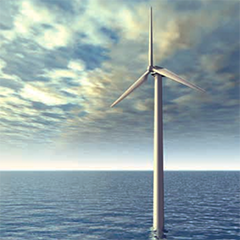A recent event showcased the outputs from a Franco- British collaboration designed to reduce the cost of maintaining offshore renewable energy assets: the
Mer-Innovate project. We take a look at the state of play.
On 18 March almost 50 delegates arrived at a venue fittingly situated by the coast at Portsmouth Harbour. As they crossed the wooden walkway to reach the entrance, a soft wind blew in from the sea. This ubiquitous but often under-acknowledged source of energy was the very reason people had come. Marine offshore renewable energy presents many opportunities but also many challenges.
The Mer-Innovate project has been tackling the most obvious of these challenges: reducing the cost of producing electricity from offshore windfarms. But the project’s approach and the solutions it proposes are far from obvious – and may completely alter the way offshore assets such as wind turbines are managed and maintained.
The project aimed to develop new procedures, protocols and modelling tools for reducing the cost of maintaining renewable energy assets based at sea. The results include online ‘serious games’ that make the complex computer programmes designed to predict the failure of particular offshore assets and their components easy
to use and interpret. Another output from the project was ‘augmented reality’ glasses that allow engineers to assess and supervise repairs from afar.
The Mer-Innovate project was led by the Knowledge Transfer Network (KTN) and partners included Technopole Cherbourg Normandie, CESI Haute-Normandie and the University of Exeter. Selected under the European border cooperation programme, INTERREG-IVA France (Channel) – England, it was co-funded by the European Regional Development Fund.















